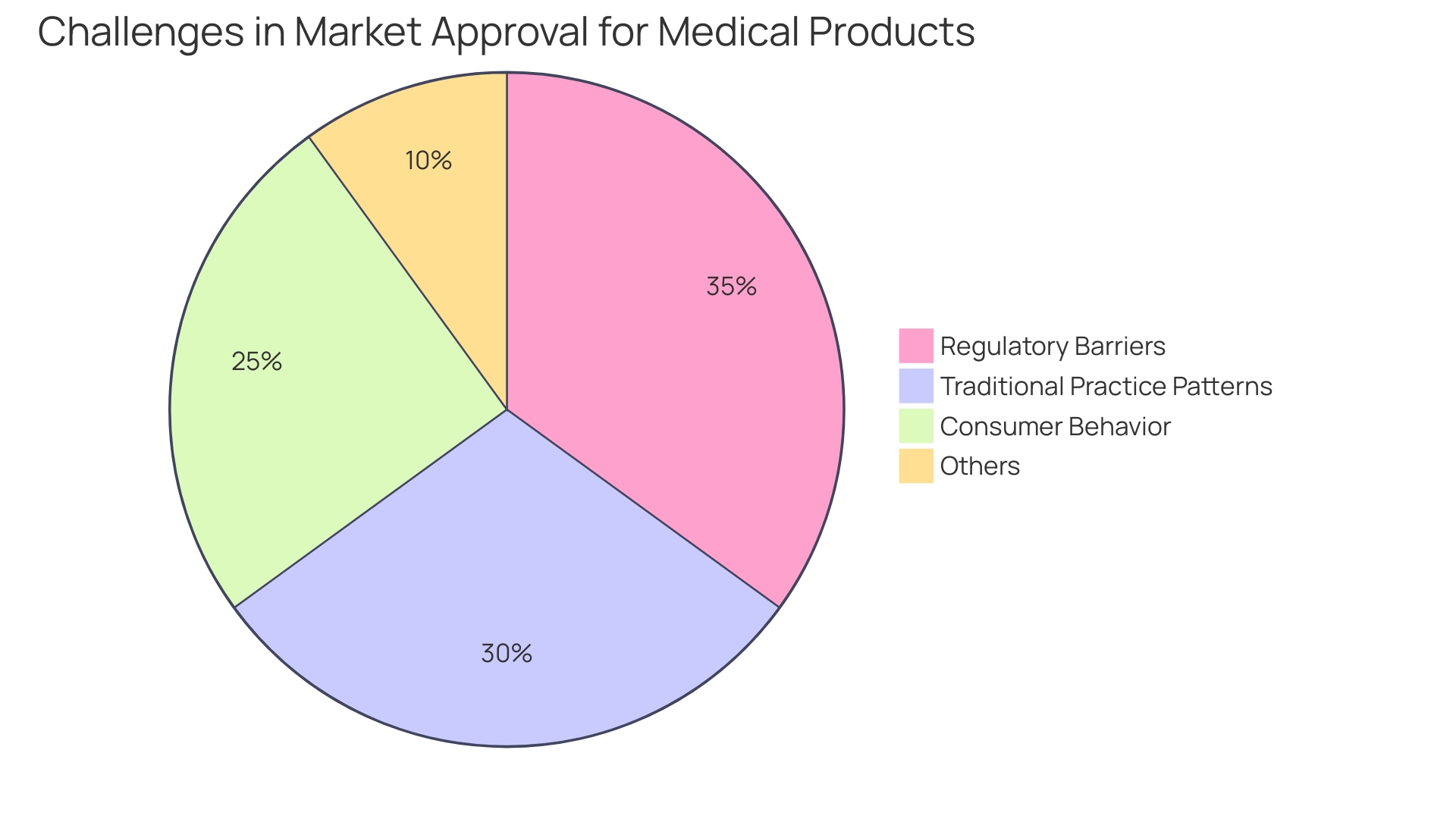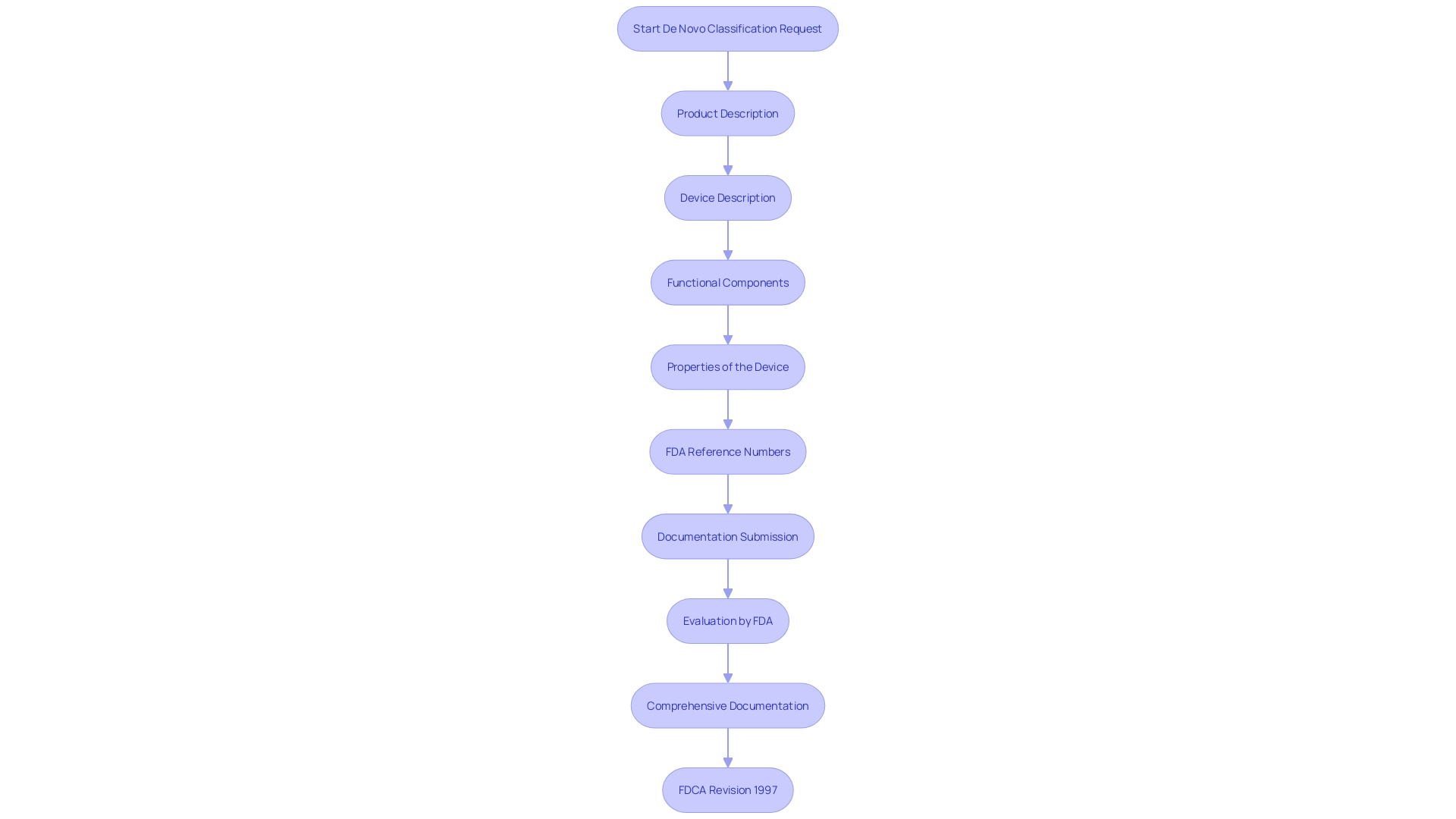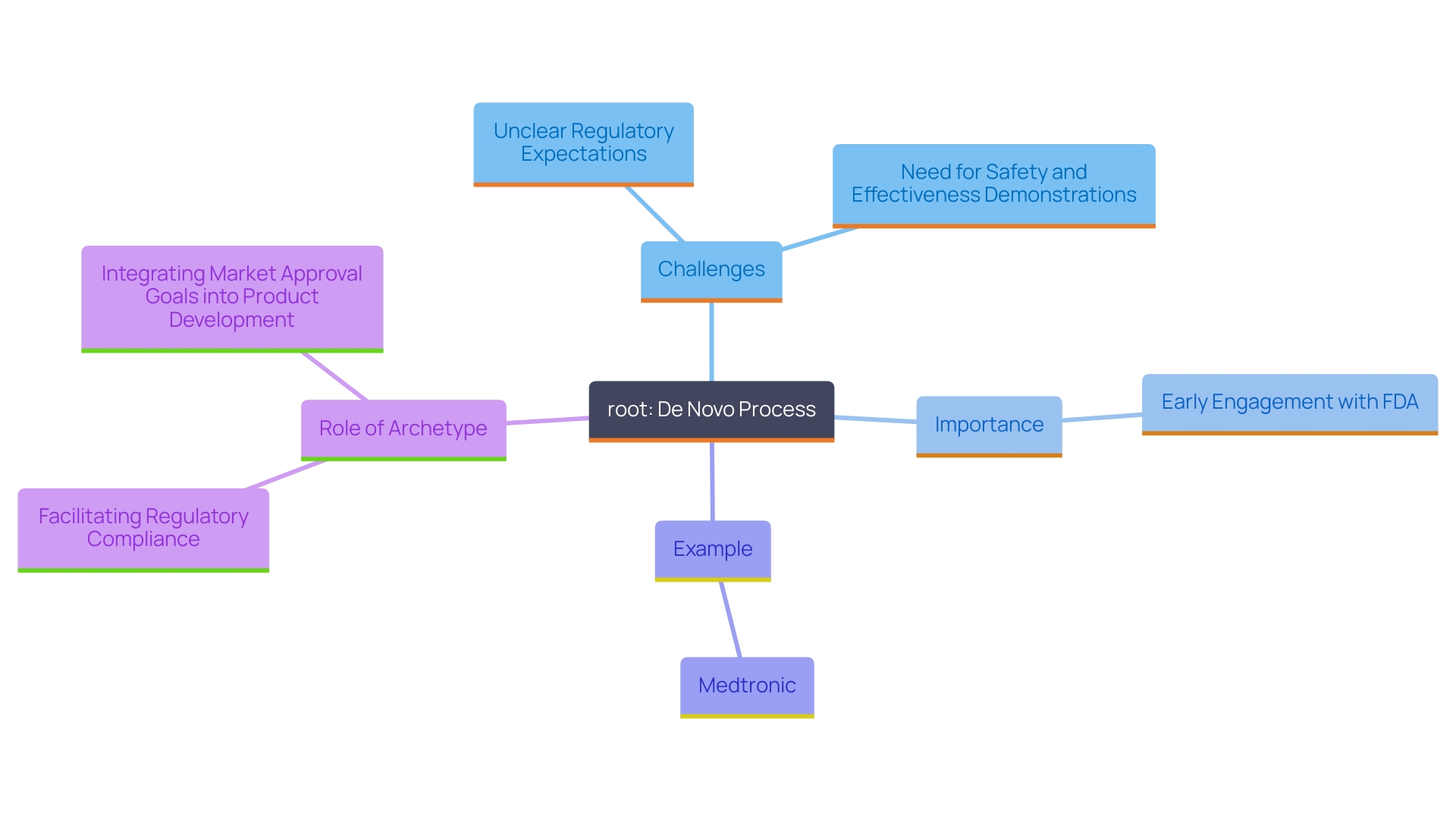Introduction
The De Novo classification pathway represents a crucial mechanism for the FDA to categorize new, low-to-moderate risk medical devices that lack legally marketed predicate devices. This pathway is particularly valuable for manufacturers seeking to expedite the market introduction of innovative devices, offering a streamlined review process compared to the traditional premarket approval routes. This efficiency is especially advantageous for startups and smaller companies, which often face significant barriers in navigating more complex approval processes.
The De Novo pathway not only mitigates these obstacles but also aligns with the FDA's broader commitment to modernizing regulatory frameworks, as evidenced by initiatives like the 510(k) modernization. By understanding the key elements of a De Novo classification request and the associated challenges and opportunities, manufacturers can better navigate this regulatory landscape, ultimately fostering a dynamic environment for medical device innovation.
Understanding the De Novo Regulatory Pathway
The De Novo classification process provides an essential method for the FDA to classify low-to-moderate risk medical products that are new and do not have legally marketed reference items. This route is crucial for producers seeking to introduce cutting-edge products to the market quickly. In contrast to the conventional premarket approval procedure, the alternative route enables a more efficient evaluation, guaranteeing that products fulfilling particular safety and efficacy standards can be categorized effectively. This approach is particularly advantageous for startups and smaller companies that may not have the resources to navigate the more complex traditional approval routes.
Device makers often face numerous challenges, such as traditional practice patterns, consumer behavior, and regulatory barriers. However, the new route assists in reducing some of these challenges by offering a clearer and quicker way to market approval. As noted in recent industry observations, there has been a steady growth in AI product approvals, with a 26% increase per year over the last four years. This trend highlights the importance of streamlined regulatory processes in fostering innovation.
Furthermore, the FDA's commitment to advancing and bringing efficiency to the review process is evident in their 510(k) modernization initiative. This initiative aims to develop best practices for selecting predicates to support 510(k) submissions, which can enhance the alternative process by ensuring that products are evaluated based on current safety data. By concentrating on these streamlined pathways, the FDA facilitates the introduction of innovative medical tools while upholding high safety and effectiveness standards.

Key Elements of a De Novo Classification Request
To submit a De Novo classification request, manufacturers must provide a detailed description of the product and its intended use, supported by evidence of safety and effectiveness. This includes comparing the new item with any current items. Detailed information about the manufacturing process, labeling, and special controls to mitigate risks must also be included. The submission must show how the equipment operates in its intended environment and address potential risks to patients. This comprehensive documentation is critical for the FDA’s evaluation, ensuring that it meets all necessary safety and effectiveness criteria. 'Since the revision of the Federal Food, Drug, and Cosmetic Act (FDCA) in 1997, the new product review process has been an essential regulatory route for innovative offerings, with additional changes in 2012 permitting more efficient submissions.'. The FDA’s classification orders and decision summaries, posted since 2010, provide invaluable guidance for new market entrants.

Challenges and Opportunities in De Novo Approvals
The De Novo process provides a promising avenue to market for innovative medical products, but it poses several challenges for producers. Regulatory expectations can be unclear, leading to potential delays in review times. Moreover, demonstrating safety and effectiveness without a predicate device for comparison adds complexity. Despite these hurdles, the route allows for the introduction of breakthrough technologies that can significantly enhance patient care. Early engagement with the FDA is crucial; companies that seek guidance early in the process can better navigate these challenges.
Medtronic, a global healthcare technology leader, exemplifies the potential of successfully navigating the De Novo pathway. Headquartered in Galway, Ireland, Medtronic's mission is to alleviate pain, restore health, and extend life. The organization’s varied portfolio, which consists of cardiac instruments, surgical robotics, and patient monitoring systems, showcases the transformative influence of innovative healthcare tools. Medtronic leverages its extensive knowledge and commitment to improving patient outcomes to deliver solutions that address some of the most challenging health problems.
According to a report from the National Library of Medicine, around three-quarters of MedTech innovations fail to reach the market. Companies like Medtronic that engage early with regulatory bodies can mitigate some of these risks. Archetype, a MedTech innovation management consultancy, emphasizes the importance of early regulatory and quality assurance involvement in the design process to prevent delays and non-compliance. Their comprehensive approach, which integrates market approval goals into every phase of product development, aims to ensure that life-changing healthcare tools reach patients efficiently.
Dr. Stuart Grant, Principal Consultant at Archetype, highlights the necessity of clear and accessible FDA guidance for product sponsors. With a career spanning over 25 years, Dr. Grant has led initiatives in leading MedTech sectors and underscores the importance of forward-looking and feasible regulatory guidance to overcome the challenges faced by CGT developers.

Impact of De Novo Approvals on Medical Device Innovation
The new approach has transformed healthcare apparatus innovation by simplifying the authorization process for new instruments, thus hastening their introduction to the market. This accelerated route has greatly enhanced funding in research and development, leading to the creation of tools that tackle previously unfulfilled healthcare requirements. Notably, this has been particularly beneficial for digital health technologies and other emerging fields where traditional classification methods may fall short. The new procedure has therefore been essential in nurturing a vibrant and changing healthcare apparatus, encouraging innovation while upholding strict criteria for patient safety. This evolution is underscored by various ethical, legal, and social considerations, which include market incentives and intellectual property concerns. The route’s impact extends across academia, healthcare, government, and the private sector, highlighting its broad-reaching implications. By addressing these multifaceted issues, the De Novo pathway ensures that medical device advancements are both innovative and ethically sound.
Conclusion
The De Novo classification pathway serves as a vital mechanism for the FDA, facilitating the introduction of low-to-moderate risk medical devices that lack existing predicates. By streamlining the approval process, this pathway significantly benefits manufacturers, particularly startups and smaller companies, enabling them to bring innovative solutions to market more efficiently. The ongoing growth in approvals, especially in areas like AI devices, underscores the importance of such regulatory frameworks in fostering medical device innovation.
Manufacturers must navigate specific requirements when submitting a De Novo classification request, including comprehensive documentation on device safety, effectiveness, and manufacturing processes. Despite the challenges inherent in demonstrating safety without a predicate device, early engagement with the FDA can help mitigate potential risks and delays. Successful case studies, such as Medtronic, illustrate how strategic planning and regulatory collaboration can lead to significant advancements in patient care.
Overall, the De Novo pathway has revolutionized the medical device landscape by promoting innovation while maintaining stringent safety standards. Its impact is felt across various sectors, encouraging investment in research and development and addressing unmet medical needs. By continuing to focus on these streamlined regulatory processes, the medical device industry can ensure that groundbreaking technologies not only enter the market swiftly but also uphold the highest ethical and safety standards.




